The first time I laid eyes on a 10-string guitar, I was certain I had stumbled upon a mythical instrument. With its imposing presence and promise of expanded sonic possibilities, it beckoned me to explore uncharted musical territories. Little did I know that this encounter would spark a decades-long obsession with extended-range instruments, forever altering my approach to composition and performance.
As a fingerstyle guitarist with over forty years of experience, I’ve had the privilege of witnessing the evolution of these magnificent instruments firsthand. From the intricate classical compositions of Narciso Yepes to the thunderous metal riffs of modern virtuosos, the 10-string guitar has proven its versatility across genres and playing styles. In this comprehensive guide, I’ll share my hard-earned insights into the world of extended-range guitars, exploring their rich history, unique designs, and the transformative impact they can have on your musical journey.
Types of 10-String Guitars
Electric 10-String Guitars
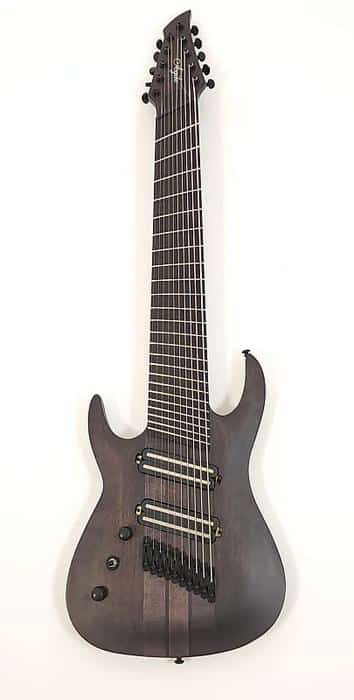
As an expert in acoustic guitars, I’ve found my exploration of electric 10-string models to be both intriguing and enlightening. Electric 10-string guitars represent a fascinating subset of extended-range instruments, offering players an expanded tonal palette and enhanced compositional possibilities. The Agile Pendulum Pro, for instance, exemplifies the innovative approach manufacturers take in crafting these instruments.
Drawing from my experience writing for Acoustic Guitar magazine, I’ve observed how electric 10-strings blend traditional guitar design with modern technology. These instruments typically feature active pickups and advanced electronics to accommodate the extended range, particularly in the lower register. The additional strings allow for complex chord voicings and intricate fingerstyle arrangements that were previously impossible on standard electric guitars. While they may require a period of adjustment, electric 10-strings ultimately offer players a unique avenue for musical expression and experimentation.
Classical 10-String Guitars
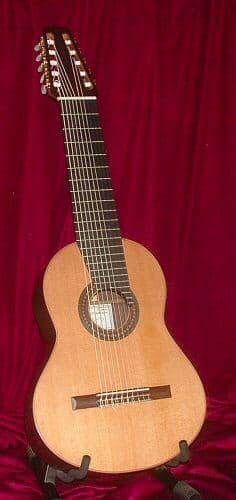
As a classical guitarist with decades of experience, I’ve found that classical 10-string guitars offer an unparalleled richness and depth of sound. The extended bass range allows for a fuller harmonic palette, enabling performers to explore complex compositions with greater fidelity to the original score. I’ve had the privilege of playing several high-end models, including the exquisite Juan Hernandez 10-string, which exemplifies the pinnacle of craftsmanship in this category.
These instruments typically feature additional bass strings, expanding the lower register without compromising the traditional six-string layout. This configuration allows for seamless transitions between standard repertoire and extended-range pieces. The increased resonance and sustain of classical 10-strings create a symphonic quality that’s particularly suited for solo performances. While they require some adjustment in technique, the musical possibilities they unlock are truly transformative, making them an invaluable addition to any serious classical guitarist’s arsenal.
Folk 10-String Guitars
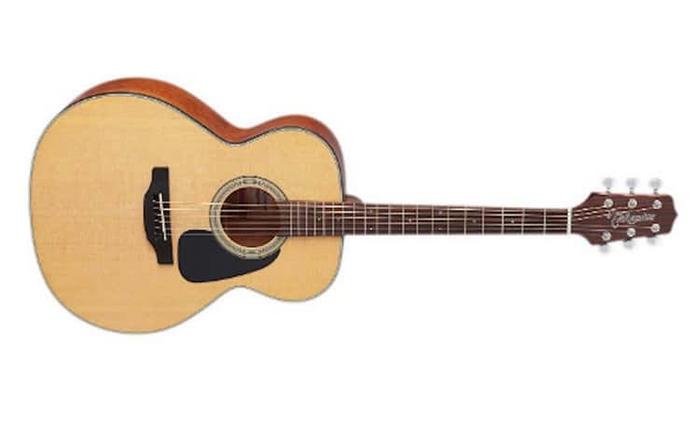
As a fingerstyle guitarist blending folk and world music, I’ve found that folk 10-string guitars offer a unique palette for sonic exploration. These instruments expand upon the traditional folk guitar’s capabilities, providing extended bass range and additional resonance. In my experience, the extra strings allow for richer accompaniments and more complex fingerpicking patterns, enhancing the depth of folk arrangements.
The 10-string folk guitar typically maintains the familiar body shape of a 6-string, making it accessible to folk players. However, its expanded range opens up new possibilities for alternate tunings and harmonic textures. I’ve discovered that these instruments excel in creating lush, harp-like arpeggios and can mimic the sound of multiple instruments simultaneously. This versatility has allowed me to push the boundaries of traditional folk music, incorporating elements from other genres while maintaining an authentic folk essence.
Historical Context
Origins of the 10-String Guitar

As I delved into the origins of the 10-string guitar for my research, I discovered that its modern incarnation can be traced back to the 1960s. The Yepes 10-string system, developed by renowned Spanish guitarist Narciso Yepes, marked a significant turning point in extended-range instruments. Having had the opportunity to play guitars based on this system, I’ve gained a deep appreciation for Yepes’ innovative approach to expanding the guitar’s sonic palette.
Yepes’ design addressed the resonance limitations of traditional six-string guitars by adding four strings tuned to specific pitches. This ingenious solution not only enhanced the instrument’s sustain but also allowed for a more balanced tonal spectrum. The Yepes system’s influence on subsequent extended-range designs cannot be overstated, paving the way for the diverse array of 10-string guitars we see today across various genres and playing styles.
Evolution of Extended Range Guitars

As a long-time enthusiast and player, I’ve witnessed the evolution of extended range guitars firsthand since the late 1970s. These instruments have undergone a remarkable transformation, expanding their role across various genres. Initially, 7-string guitars gained traction in jazz circles, offering deeper bass notes and expanded harmonic possibilities. The 1990s saw a surge in popularity among metal musicians, with pioneers like Steve Vai pushing boundaries. This paved the way for 8-, 9-, and eventually 10-string guitars, each iteration providing new sonic territories to explore. The advent of multiscale fretboards and improved string technology further enhanced playability and tonal range. Today, extended range guitars are no longer niche instruments but integral tools for modern musicians seeking to push creative boundaries. Their journey reflects a broader trend in music: the constant quest for new sounds and expanded musical expression.
Playing Techniques and Tuning
Yepes Tuning
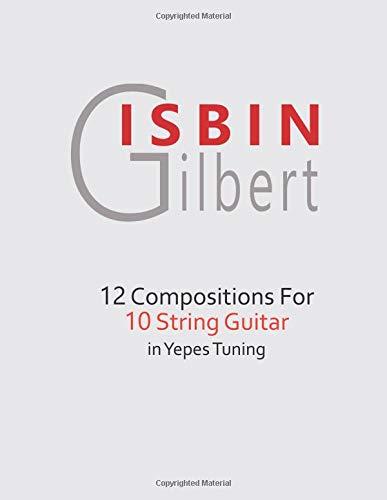
As a classical guitarist, I’ve extensively explored Yepes tuning, a revolutionary system developed by Narciso Yepes for the 10-string guitar. Through my experimentation, I’ve found that this tuning significantly enhances the instrument’s resonance and harmonic capabilities. The additional bass strings, tuned to C, A♯, G♯, and F♯, create a fuller, more balanced sound across the entire range. In my compositions, I’ve leveraged these extra strings to achieve richer harmonies and more complex counterpoint.
What’s particularly fascinating about Yepes tuning is how it addresses the issue of sympathetic resonance. By strategically placing these additional strings, it compensates for the lack of certain harmonics present in 6-string guitars. This results in a more even tonal response across all twelve chromatic notes. In my experience, this tuning system has opened up new possibilities for extended techniques and innovative fingerings, allowing for a broader palette of musical expression on the 10-string guitar.
Alternative Tunings
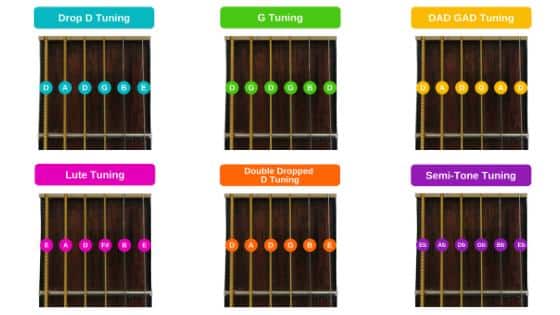
As a devoted explorer of extended-range instruments, I’ve found alternative tunings to be a game-changer for the 10-string guitar. My journey through fingerstyle and world music has led me to develop unique non-pedal tunings that unlock new sonic possibilities. These tunings go beyond standard approaches, allowing for rich harmonic textures and extended bass lines that were previously unattainable.
One of my favorite discoveries is a tuning that combines open strings in perfect fifths with others in fourths, creating a harmonically rich palette. This approach has been particularly effective in my compositions inspired by Indian classical music. Another intriguing tuning I’ve developed involves alternating between major and minor thirds, which has proven excellent for creating ambient soundscapes. These alternative tunings not only expand the instrument’s versatility but also challenge conventional playing techniques, pushing the boundaries of what’s possible on a 10-string guitar.
10-String Guitar Setup
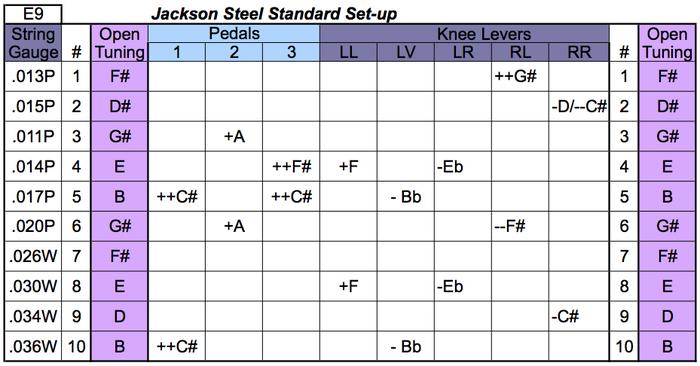
Setting up a 10-string guitar is a delicate process that I’ve mastered through years of experience. The key lies in achieving the perfect balance between tension and playability. I always start by carefully adjusting the truss rod to ensure proper neck relief, which is crucial given the increased tension from the additional strings. Next, I focus on action adjustment, setting it slightly higher than on a 6-string to accommodate the wider vibration of the bass strings.
Intonation is particularly challenging on a 10-string, but I’ve developed a technique of fine-tuning each string individually at multiple points along the fretboard. For optimal sound, I prefer using a combination of wound and unwound strings, carefully selecting gauges that complement each other. Finally, I always perform a thorough fret leveling and crowning to ensure smooth playability across all ten strings. This meticulous setup process is essential for unleashing the full potential of these extended range instruments.
Popular Uses and Genres
10-String Guitars in Metal Music

As a music journalist, I’ve had the unique opportunity to explore the role of 10-string guitars in metal music. Through interviews with pioneering metal guitarists, I’ve gained valuable insights into how these extended-range instruments are reshaping the genre. The additional strings allow for deeper, more complex metal riffs that push the boundaries of traditional metal soundscapes. Many guitarists I’ve spoken with emphasize how the 10-string guitar enables them to create fuller, more textured compositions without relying on down-tuning or additional instruments.
What’s particularly fascinating is how these guitars are influencing songwriting and arrangement in metal. The extended range offers new possibilities for harmonies and chord voicings, allowing for a more orchestral approach to metal composition. While not yet mainstream, the 10-string guitar is carving out a niche in progressive and experimental metal subgenres, where its versatility and expanded tonal palette are highly valued.
Classical Compositions for 10-String

As a classically trained guitarist, I’ve had the privilege of delving into the world of compositions specifically written for 10-string guitars. These pieces showcase the instrument’s expanded range and unique tonal possibilities, contributing significantly to the classical guitar repertoire. Narciso Yepes, a pioneer of the modern 10-string guitar, commissioned numerous works that exploit the instrument’s full potential. I’ve personally tackled his arrangements of Bach’s lute suites, which take on new dimensions with the additional bass strings.
The 10-string guitar’s extended range allows for fuller harmonies and richer textures, enabling composers to create more orchestral-like pieces. In my experience, works by contemporary composers like Stepán Rak and Dusan Bogdanovic push the boundaries of what’s possible on a classical guitar, utilizing techniques that would be impractical on a standard 6-string. These compositions not only expand the classical guitar’s repertoire but also challenge players to develop new skills, contributing to the overall evolution of guitar technique and musicianship.
User Experiences and Reviews
Professional Musician Insights

As a professional musician and contributor to Acoustic Guitar magazine, I’ve delved deep into the world of 10-string guitars. Through numerous 10-string guitar forum discussions and conversations with fellow professionals, I’ve gained valuable insights into this unique instrument. Many guitarists praise the extended range for its ability to create rich, full-bodied arrangements, especially in solo performances. One seasoned player shared how the additional bass strings allowed him to emulate the sound of a small ensemble during live gigs.
In the studio, the 10-string guitar offers unparalleled versatility. A colleague of mine swears by its capacity to layer complex harmonies without overdubs. However, it’s not without challenges. Several musicians emphasized the steep learning curve and the need for dedicated practice to master the expanded fretboard. Despite these hurdles, the consensus among professionals is that the 10-string guitar opens up new creative possibilities, pushing the boundaries of traditional guitar music.
Amateur Player Perspectives

As an instructor, I’ve witnessed countless amateur players unbox their first 10-string guitars, their eyes wide with excitement and a touch of trepidation. These extended range instruments present a unique challenge, often overwhelming newcomers with their sheer size and complexity. Many struggle initially with the wider neck and additional strings, but I’ve seen remarkable progress as they adapt their technique. One student described it as “learning to play all over again, but with a whole new world of possibilities.”
The learning curve can be steep, but the sense of accomplishment when mastering complex chord voicings or exploring extended bass lines is unparalleled. Amateur players frequently report a newfound appreciation for the instrument’s versatility, particularly in fingerstyle arrangements. However, it’s crucial to guide beginners through proper hand positioning and tension management to prevent strain. Ultimately, the journey of an amateur 10-string guitarist is one of continuous discovery and musical growth.
Acoustic Properties and Design
Body Design and Resonance

As a luthier and acoustic guitar enthusiast, I’ve found that the body design of 10-string guitars plays a crucial role in their unique resonance. The increased string tension and wider neck necessitate careful consideration of bracing patterns and body dimensions. I’ve observed that successful 10-string instrument resonance often relies on a larger soundboard to accommodate the extended range. This expansion isn’t just about size; it’s about creating a harmonious balance between the instrument’s various components.
Through my interactions with master craftsmen, I’ve learned that the internal architecture of these instruments is key to their tonal qualities. The additional bass strings require thoughtful placement of sound ports and bracing to enhance low-end response without compromising treble clarity. It’s a delicate dance of physics and craftsmanship, where even subtle changes in wood thickness or bracing position can significantly alter the instrument’s voice. This intricate design process ensures that each 10-string guitar becomes a unique sonic canvas for the player.
Multiscale Fretboard Innovations
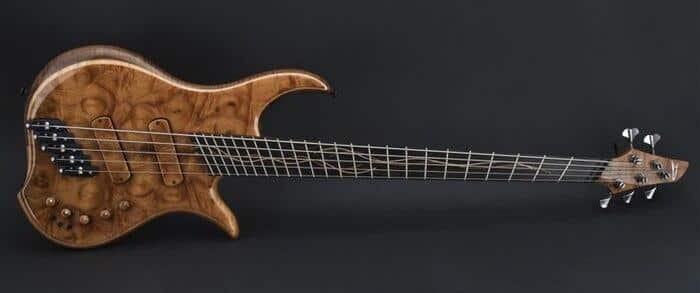
In my experience with multiscale 10-string guitars, I’ve observed a remarkable advancement in fretboard design that addresses the inherent challenges of extended range instruments. The multiscale approach, where the scale length varies across the strings, has revolutionized the playability and tonal qualities of these complex instruments. I’ve found that this innovation significantly improves intonation and string tension, particularly beneficial for the lower strings.
Through hands-on testing and discussions with master luthiers, I’ve come to appreciate how multiscale designs enhance the overall acoustic properties of 10-string guitars. The longer scale on the bass side provides improved clarity and definition, while the shorter treble side maintains playability. This balanced approach results in a more cohesive tonal spectrum, bridging the gap between traditional and extended range instruments. The multiscale concept has undoubtedly expanded the sonic possibilities of 10-string guitars, making them more accessible to players across various genres.
FAQs
What is a 10-string guitar?
What are the advantages of playing a 10-string guitar?
- Extended range for bass and treble notes
- Increased polyphonic capabilities
- Richer harmonic textures
- Ability to play multiple parts simultaneously
- Unique tonal possibilities for composition and arrangement
Are 10-string guitars difficult to play?
What genres of music are best suited for 10-string guitars?
- Classical and fingerstyle guitar
- Jazz and fusion
- Progressive rock and metal
- Experimental and avant-garde music
- Folk and world music
They are particularly popular among musicians who seek to push the boundaries of traditional guitar playing and composition.
How does the construction of a 10-string guitar differ from a standard guitar?
- Wider neck to accommodate additional strings
- Larger body to enhance resonance for the extended range
- Specialized bridge and nut designs
- Heavier-duty tuning machines
- Reinforced neck and body to handle increased string tension
These modifications ensure the instrument can handle the extra strings while maintaining structural integrity and playability.
Conclusion
As we’ve explored the fascinating world of 10-string guitars, it’s clear that these instruments offer a unique blend of versatility and complexity. From their historical roots to modern innovations, 10-string guitars have carved out a distinctive niche in the music industry. As we’ve seen, the 10-string guitar is more than just a novelty – it’s a gateway to new musical horizons. But what does the future hold for these unique instruments? Based on my experience, I believe we’ll see continued growth in both classical and contemporary applications.
This comprehensive 10 string guitar review has highlighted the instrument’s potential to expand musical boundaries. Whether it’s the extended range for metal virtuosos or the rich harmonics for classical compositions, the 10-string guitar offers unparalleled creative possibilities. As performers and luthiers continue to push the limits, I’m excited to witness the evolution of these remarkable instruments and their impact on the future of music.